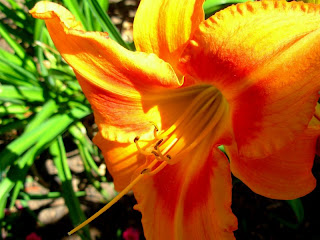
Thanks to Marie Ionotti from About.com for photos and script below!
Dividing & Transplanting
Spring is the ideal time for dividing or transplanting. Try to do this as soon as possible after the plant emerges. It's amazing how quickly plants recover from this abuse if you catch them early, when the weather is still mild and they're raring to grow.
Many perennial plants grow in an ever widening clump. After several seasons of growing, these perennial plants will begin to die out in the center and look more like a ring than a clump. To keep the plants vigorous and blooming, a technique known as 'Division' is performed. Dividing perennial plants gives you healthier, longer lived plants and the bonus of more plants.When to divide perennials depends on the type of plant and how quickly it's growing. You don't have to wait until your perennial plants begin looking like doughnuts. In fact, it's better if you don't. Keep an eye out for clumps that have grown 2-3 times their size within 2-5 years. Any over grown clump or any clump that has simply exceeded the space allotted is a candidate for division.
A very common method of dividing perennials is to use 2 pitch forks to pry and split the plant apart. Perennial plants with fleshy roots, such as the daylily shown here, are easily pried apart with forks.Insert the forks into the center of the lifted plant so that the backs of the forks are touching each other and the tines are crossing. Press down so that the forks go through the plant. You will probably hear some cracking at this point. Let's hope it's your plant and not the handle on your pitch fork. In all seriousness, some plants are so dense that this method will not work. Exercise caution, since garden tool handles can break and send you tumbling.


No comments:
Post a Comment